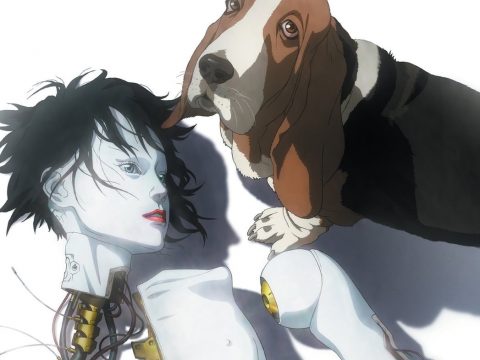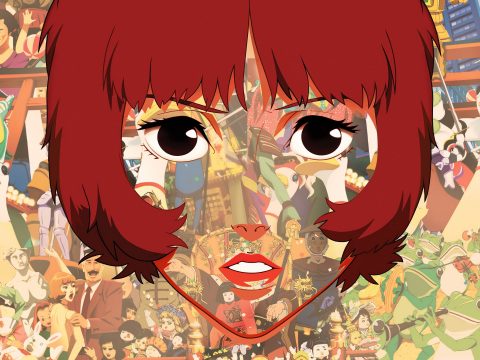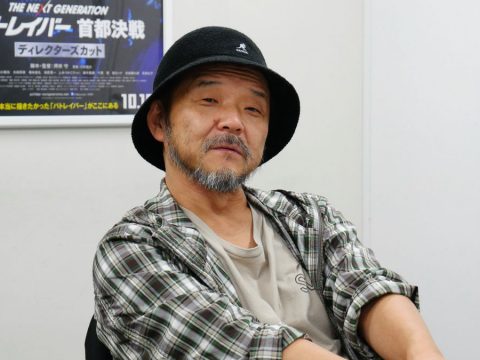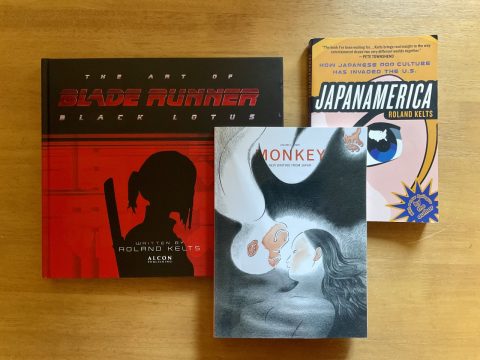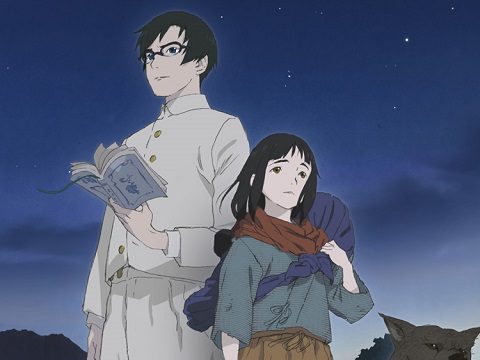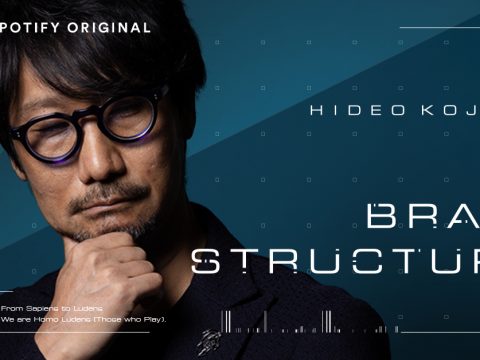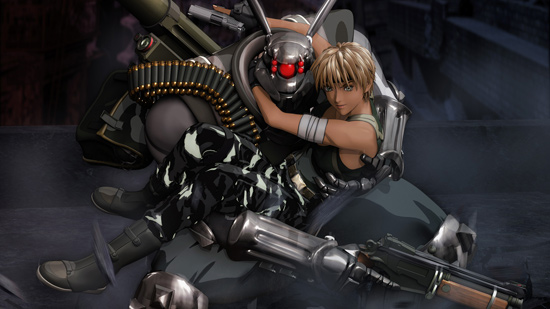
This month, an exhibition rolling through Japan is celebrating the 25th anniversary of Ghost in the Shell. Though it’s almost been overshadowed by the various anime adaptations, the Ghost in the Shell that appeared 25 years ago and serves as the template for every Ghost in the Shell anime, novel, and video game is the original manga, illustrated and written by reclusive artist Masamune Shirow.
Though he’s been out of the manga game for well over a decade, Masamune Shirow’s work continues to be tapped for adaption by the Japanese animation industry. First breaking into professional manga in the ’80s, the one-time art teacher wrote and illustrated a number of sci-fi manga featuring strong female leads; a formula that soon became his trademark. His most popular titles, Appleseed, Dominion Tank Police and Ghost in the Shell, would all be adapted into anime films, OVAs and TV series, despite Shirow’s creative output dropping off drastically in the late ‘90s.
This summer alone we’ve seen two new films based on Shirow’s work: Appleseed Alpha and the latest in the Ghost in the Shell: ARISE series. At this point it seems safe to say that the animated versions of both of these franchises have completely eclipsed their manga forebears, largely because Shirow withdrew from the manga industry over a decade ago. Not helping the matter is the fact that Shirow’s manga work feels decidedly dated, and while the animated iterations have updated his core ideas with more modern approaches, his manga is very much a product of the era within which it was created.
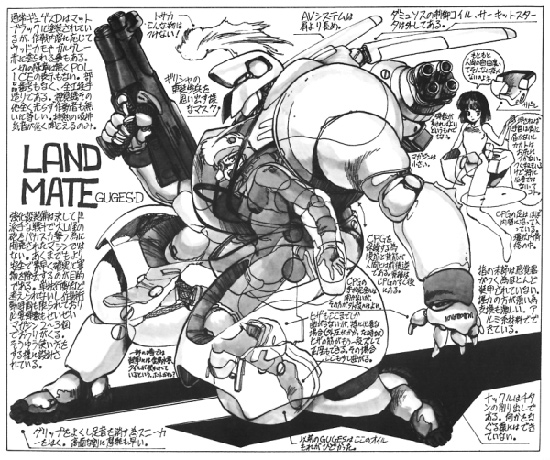
Shirow came to prominence in an era when militarism and mechanical designs were a major draw to otaku. Many otaku favored grittier, more realistic sci-fi with plenty of real-life military influences, a trend that can trace its roots back to the original “realistic” giant robot anime, Mobile Suit Gundam. The popularity of Gundam spurred the creation of what we’d now call the “real robot” genre, leading to shows like Super Dimension Fortress Macross and Armored Trooper VOTOMS, which diverged considerably from the “super robot” stylings of the 1970s. While these shows were still aimed at kids and were still designed to sell toys, in model magazines of the era their more realistic designs were seized upon by modelers who combined them with military aesthetics. In short, Shirow’s insistence on explaining extraneous technical details and drawing from actual military technology appealed to the kind of guys who jumped on the idea of adding zimmerit to their Gundam model kits.
Even now, the level of detail that Shirow poured into his work is impressive. He loved informing readers of minute details, like the importance of a handgun’s caliber in a given scene. His writing in the Appleseed Databook really bring to light the extent of his world building and the amount of work he’d put into developing a setting, which some would argue came at the cost of reasonable storytelling or character development. In fact, prior to the Great Hanshin earthquake in 1994, which caused significant damage to his studio, Shirow was working on a world building project called Neurohard, designed to act as a setting within which other writers and artists could set their own stories.
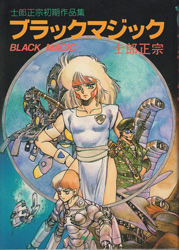
It’s this attention to detail that has likely lead to Shirow’s enduring legacy, as his detailed settings serve as a springboard for creators to tell their own stories, or at the very least, share their own take on his stories. The irony is that while his works live on in anime form, many fans lament the loss of a creator who’s moved on from creating new manga to a career seemingly based around doing erotic illustrations and pinups for magazines.
So what about the anime?
The first of Shirow’s manga adapted for animation was actually a doujinshi he created in 1983 titled Black Magic. With the manga rereleased professionally after Shirow’s pro debut with Appleseed, Black Magic was adapted into an OVA in 1987. In the late ‘80s, the OVA market was booming and anime producers were scrambling to find animated material to sell on VHS tapes for 10,000 yen a pop. Popular manga titles were common targets for adaptation, thanks in part to the fact that their established readership made for easy marks to target with new merchandise. Black Magic was never as popular as his later manga, but the Shirow’s success with Appleseed made it a prime candidate for adaptation.
Drawing from one of Black Magic’s storylines involving journalists and a killer robot, the most notable aspect of the OVA was the involvement of Shirow himself, who handled screenwriting, storyboarding and co-directing duties. While not dissimilar to Katsuhiro Otomo’s work on the animated version of his manga Akira in 1988, Shirow apparently didn’t like animation work and Black Magic M-66 would be the last of his adaptations that he had any direct involvement with. The other director, Hiroyuki Kitakubo, would go on to direct Roujin Z and the Jojo’s Bizarre Adventure OVA, as well as being a key animator on Akira.
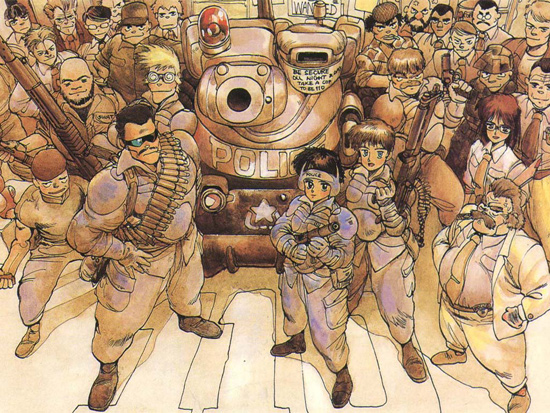
The year after M-66’s release saw two more Shirow adaptions his video shelves; the one-shot Appleseed and four-part Dominion Tank Police. As mentioned earlier, Appleseed was Shirow’s breakout work and received substantial acclaim, earning the Seiun Award for best manga in 1986. The OVA failed to capitalize on the creativity of the manga and resulted in a 70-minute adventure that blandly meandered through vaguely familiar characters and situations, without much style or creativity.
Dominion Tank Police, like Black Magic M-66 before it, did a bit better. It’s the kind of title that tends to be drenched in nostalgia for older fans, as the ubiquitousness of both Tank Police and M-66 at rental shops in the U.S. meant that it was often one of the earliest titles new fans first experienced in the ‘90s. It also wasn’t a strict adaptation, instead taking place prior to the events in the manga. In doing so it indicated a trend that was developing among adaptions of Shirow’s work, and one that would become even more noticeable in the 1990s: a refusal to directly adapt Shirow’s original story and plot.
Thanks to translations of the manga by Studio Proteus and anime releases by CPM Entertainment and Manga Entertainment, Shirow became increasingly well known among Western fans. The Appleseed manga achieved success in an era when Japanese comics were still sold in the U.S. as monthly comic books. His work appealed to the largely male demographic of early Western fandom in those days, who tended to favor harder sci-fi stories with adequately sexualized female characters. That popularity no doubt prompted Manga Entertainment to help produce the next adaption of Shirow’s work: Production I.G.’s Ghost in the Shell.
Mamoru Oshii, director of Ghost in the Shell, has stated that he personally asked Shirow’s permission to take his own approach with the material, rather than pursue a rigorous adaption. Shirow agreed. The result was a massive film, both in terms of the scale of production and the impact it had on the industry and beyond. Featuring music for the English release by U2 and Brian Eno operating under the name The Passengers, it was shown in art theaters and went on to influence a generation of cyberpunk media, most notably The Matrix.
While Ghost in the Shell draws on the characters and situations of the original manga, the film ends up feeling much more like an Oshii film than it does an adaption of Shirow’s work. Considering that Oshii is one of the most distinctive directors the Japanese animation industry has created, that’s not entirely surprising, but it set a trend for future adaptations.
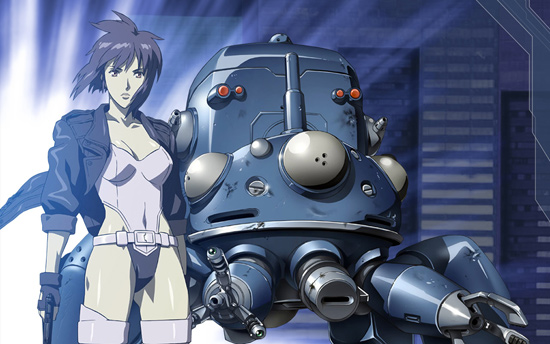
Much like the film, the 2002’s Ghost in the Shell: Stand Alone Complex TV series owes as much to the creativity and skill of its director, Kenji Kamiyama, than to the source manga. Compare these two titles with the ongoing Ghost in the Shell: ARISE, which seems to check all the right cliché boxes to be a Ghost in the Shell series, but flounders without any strong creative direction. The lesson is that perhaps the strength of the franchise isn’t the characters and setting, but what talented directors have done with it.
A similar issue plagues the other big Shirow-based animation franchise, Appleseed. Shinji Aramaki’s computer-animated trilogy plays around with the characters and setting just enough to feel familiar, yet still kind of feel like it’s missing the point. The result is a trilogy that feels shallow, as if it lacks the creative drive to be anything more than a high-budget cash in on a popular franchise. While the first film tweaked the character’s relationships just enough to miss the point of original manga, the sequel, Ex Machina, introduces frivolity like cyber-zombies and John Woo-esque shootouts. Regardless of differences, the simple truth is that Aramaki lacks talent to make the project his own in the way that Oshii or Kamiyama managed to do. Reviews of the recently released Appleseed Alpha suggest that the third outing doesn’t fix any of these underlying problems.
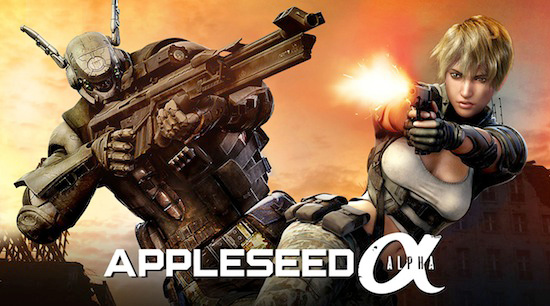
The biggest take away is that adaptions of Shirow’s work really only work when they’re taken in new directions by strong creative staff, while simply messing around with the existing formula doesn’t quite cut it. So while we’ve ended up with a lot of disappointing projects, we’ve also seen some really fantastic productions that allowed young directors like Kitakubo and Kamiyama to cut their teeth. Despite that, the resulting situation is surely something of a disappointment for Shirow fans, who’ve been besieged with phoned-in adaptations and an absent Shirow. Although in a bizarre twist, both ARISE and Appleseed Alpha have inspired their own spin-off manga adaptations by new writers and artists.
While the anime industry seems content to keep adapting his work, we’re left with a tantalizing question: What if Shirow’s work on M-66 had been more satisfactory and he’d pursued a career in animation direction, like Otomo? Would his attention to detail and world building have translated well to animation work, or would we still be lamenting the loss of a creative manga artist?
Related Stories
– Control-Anime-Delete: Anime Reinvents Itself
– Ghost in the Shell ARISE: Ghost Pain review
– Ghost In The Shell Arise: Ghost Whispers Review
– Stray Dog Of Anime: The Films of Mamoru Oshii Review
– The Minds Behind Eden of the East


